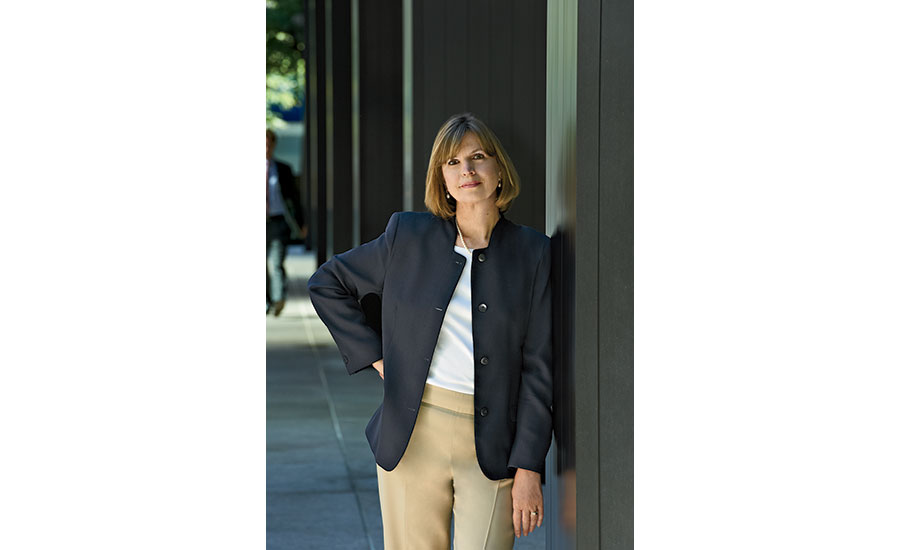No more silence. No more waiting. No more tolerance for discrimination, harassment or abuse.—Time's Up.
In late January, I was on a panel of architectural journalists at a conference at the Yale School of Architecture. When it came time for questions from the audience, a woman stood up to ask why we in the media were not covering sexual harassment in architecture. Excellent question. This is, obviously, a very serious and timely topic—yet, surprisingly, few women (or men) have been stepping forward to complain about recent sexual harassment from architects. There are rumors of bad behavior that go back decades, some involving leading figures in the profession (some now dead), but despite all the publicity around harassment in the entertainment and media industries, on Wall Street and in Silicon Valley, attempts to document new cases of predatory or abusive actions in architecture are, so far, proving difficult.
That doesn’t mean they’re not happening. When the London-based Architects’ Journal released its annual Women in Architecture survey a few weeks ago, which polled nearly 1,500 professionals in the UK, the results showed that one in seven female respondents reported having experienced sexual harassment in the workplace in the past year.
There’s a big difference, however, between filling out an anonymous survey and going through the process of filing a formal complaint with an employer or the U.S. Equal Employment Opportunity Commission (which often means hiring a lawyer). Architecture is a small profession, made up mostly of small firms—and a woman may feel too much risk or exposure in making a complaint, even if retaliation by an employer is clearly against the law. Women in architecture don’t yet have safety in numbers: the shocking flood of allegations directed at Harvey Weinstein or Dr. Larry Nassar helped those who were reportedly targets of abuse feel supported by each other and finally listened to in a male-dominated culture that had been looking the other way.
But architecture shouldn’t wait for more women to come forward to have its own #MeToo moment. It should start right now. Sexual harassment is just one form of discrimination based on gender—and all such discrimination is against federal law, including failure to pay equally for equal work, or using any employment practices that negatively affect employees based on sex. (See the legal definition of sexual harassment and other types of discrimination on the website of the U.S. Equal Employment Opportunity Commission.)
To begin, it’s essential to face up to implicit bias in architectural culture. Just one example: Rosa Sheng, FAIA, founding chair of Equity By Design, cites a 2015 study by Duke University researchers, who presented identical designs of houses to two separate groups. The group that was told the architect was male found the designs more creative than those who were told the architect was female—and both sample groups included women as well as men.
How to change such mindsets? Let’s start with architecture schools, where enrollment is now approaching 50 percent women, but the power figures with whom students engage are overwhelmingly male. More professors, more guest lecturers and more jurors on student crits should be women, with a goal of 50 percent. And sexual-harassment-prevention training should be mandatory in every curriculum.
For the profession, the Beverly Willis Architecture Foundation is proposing that the AIA specifically call out sexual harassment in its Code of Ethics and that anti-harassment training be a compulsory unit of continuing education for architects.
But even if those measures could help reduce incidents of sexual harassment, the distance to achieving true equity is still too far, despite efforts in some firms to promote more women to principals or design leaders. It’s time the profession stepped up and took a leaf from Hollywood’s Time’s Up initiative. That movement, formed in response to #MeToo, has not only created a defense fund to support women of far less privilege—office cleaners, farm and factory workers—in seeking protection from sexual abuse, but it is also pushing major companies in the entertainment industry to reach gender parity in leadership by 2020.
What if the big architecture firms took the lead and agreed to a similar goal? Fill their offices and their highest ranks to a parity of 50 percent, with the most talented women out there (and they are out there) by, say, 2030. And finally bring true pay equity and equal opportunity to women and minorities. Not just because it’s the right thing to do—but because the field of architecture in the 21st century will be diminished if it doesn’t have a reputation for fairness or reflect the diversity of the people that it serves.








Post a comment to this article
Report Abusive Comment